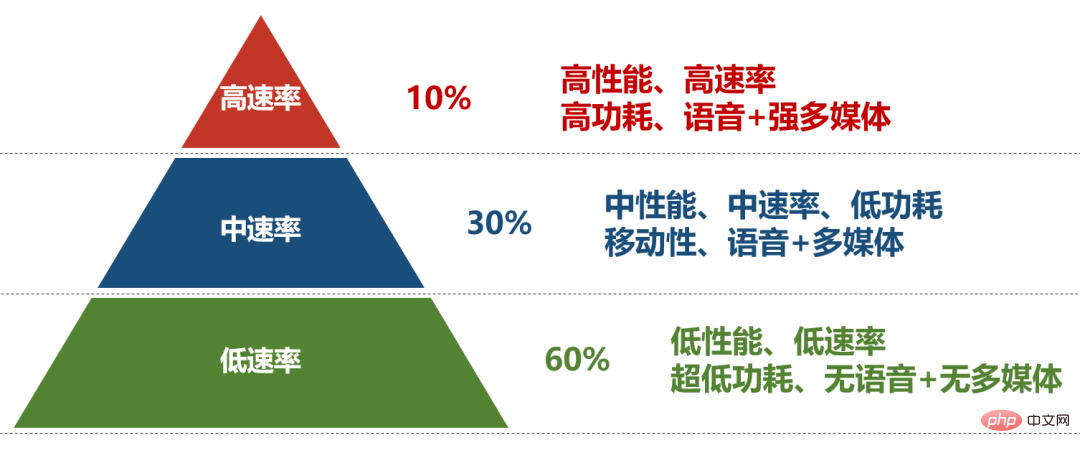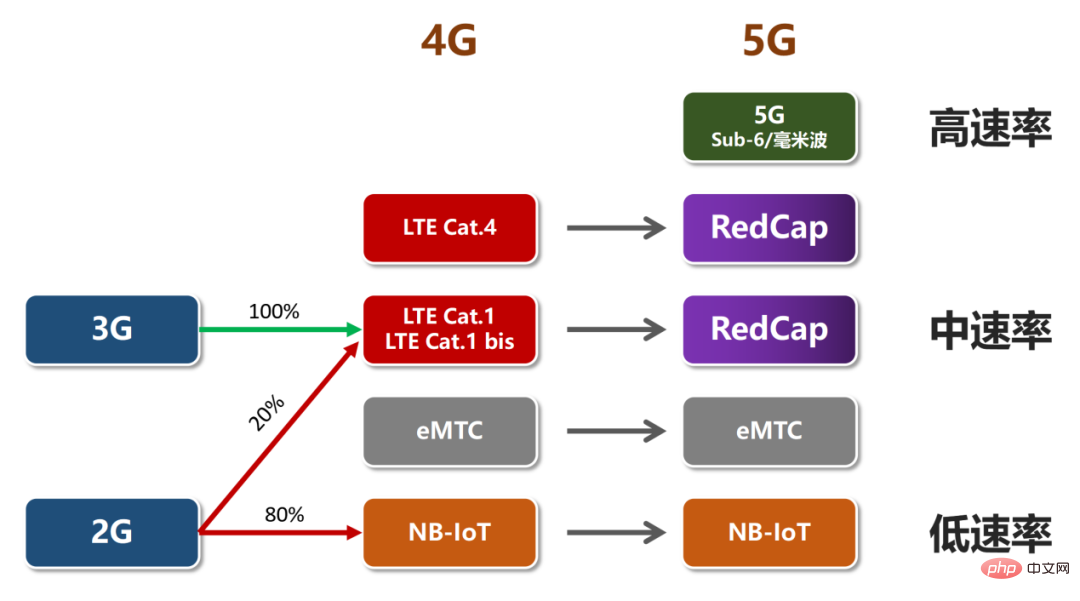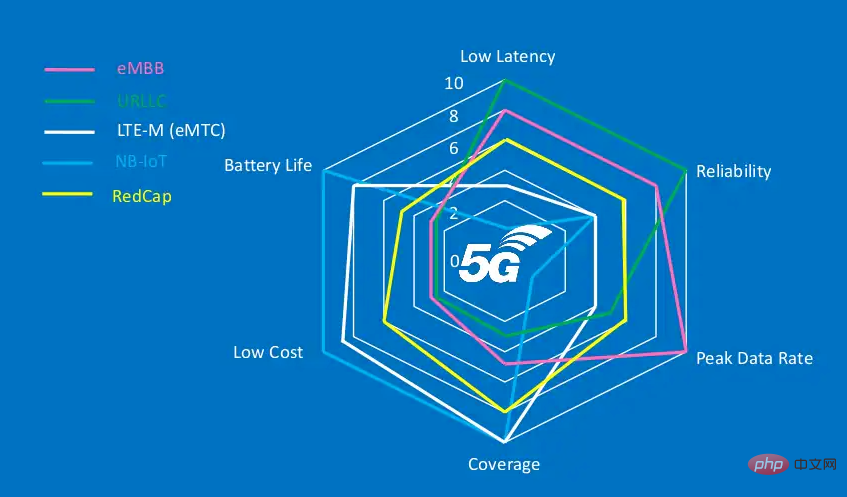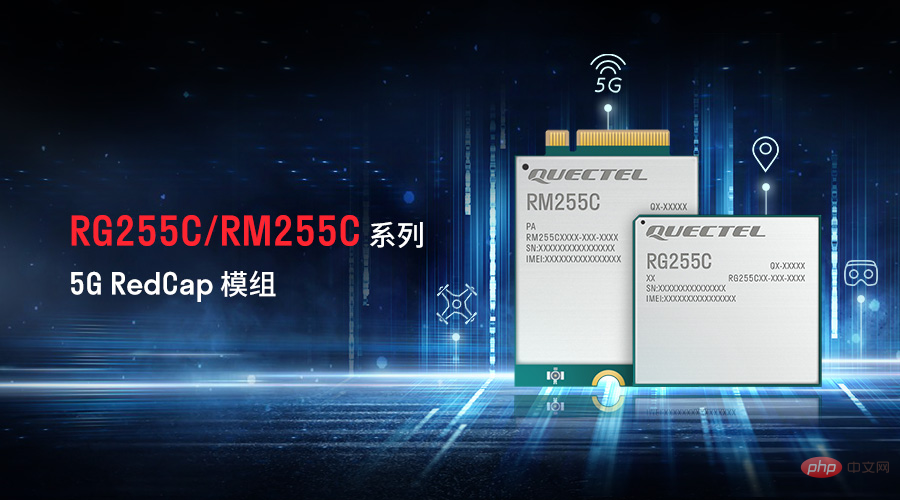Entering 2023, why is everyone starting to pay attention to RedCap?

In June last year, the 3GPP R17 version was announced to be frozen, which attracted the attention of the entire communications industry.
As we all know, as the current authoritative organization of global mobile communication standards, each release (Release) released by 3GPP points out the evolution direction of mobile communication technology and illuminates the way forward for the development of the entire industry.
In the R17 version, as a key 5G new technology specially researched, RedCap has attracted special attention and has been repeatedly reported by the media.
█ RedCap, what exactly is it?
RedCap, literally means "Little Red Riding Hood". But in fact, it is the abbreviation of Reduced Capability, which really means "reduced ability".
The so-called "reducing ability" is a relative concept. Its comparison object is 5G.
In other words, RedCap is a simplified version of 5G. It is a new technology standard formed by "cutting" some functions on the basis of 5G.
Previously, RedCap was not called its current name, but NR light (NR lite). As the name suggests, it is a lightweight version of 5G NR (New Radio). Therefore, the industry now also calls RedCap "lightweight 5G".
█ Why should we build a “lightweight 5G”?
After clarifying the definition of RedCap, you may ask: “Isn’t the stronger the performance of 5G, the better? Why should we build one instead? Simple configuration version, performance downgrade?"
Speaking of this, we need to first explain the technical system of the Internet of Things.
The concept of the Internet of Things was officially proposed in 1999.
The early Internet of Things technologies were mainly based on short-distance communication technologies such as Wi-Fi, Bluetooth, and NFC. At that time, although experts also tried to apply 2G technology to IoT scenarios, there was no progress because 2G performance was too lagging.
In the 3G/4G era, cellular communication technology has evolved rapidly and its performance has been greatly improved. As a result, long-distance IoT communications based on such technologies began to rise.
In 2016, 3GPP launched two important IoT technology standards, namely NB-IoT (Narrowband IoT) and eMTC (Enhanced Machine Type Communications).
These two technical standards are actually based on simplified versions of LTE. The speed is lower and the cost is lower, but more terminals can be connected at the same time. It is specially used in IoT scenarios. They have a collective name called LPWAN (Low Power Wide Area, Low Power Wide Area Network) technology.
In addition to NB-IoT and eMTC, LTE itself also has multiple user terminal categories (LTE UE-Category). Different categories have different rates. LTE Cat 1 is one of these categories. Its peak uplink rate is only 5Mbit/s, and it is also designed for the Internet of Things.
In the 5G era, designers have gone one step further, taking the Internet of Things as the main development scenario of 5G and proposing the grand goal of "Internet of Everything".
The three major application scenarios of 5G are eMBB (enhanced mobile broadband), uRLLC (low latency and highly reliable communication), and mMTC (massive IoT communication). They have their own emphasis on network speed, bandwidth capacity, coverage distance, spectrum efficiency, etc., and respectively serve segmented scenarios in vertical industry fields such as industrial manufacturing, transportation and logistics, medical education, and smart cities.
In the process of developing the Internet of Things, experts have discovered that the application scenarios of the Internet of Things are extremely complex. Different scenarios have different requirements for network indicators.
As a result, the industry has gradually subdivided IoT scenarios into three categories: high speed, medium speed and low speed:

Traditional high speed 5G cannot meet all the needs of the Internet of Things. Therefore, just as LTE will release NB-IoT and eMTC, 5G also needs to release a simplified version. So, there is RedCap.
According to the plan, with the withdrawal of 2G and 3G, most 2G and 3G IoT services will be migrated to LTE Cat 1, LTE Cat 4 and NB-IoT (eMTC should not be used in China ). In the future, LTE Cat 1 and Cat 4 requirements (that is, medium-speed and medium-high speed requirements) will gradually migrate to RedCap. RedCap will work with high-speed 5G to support the future development of the entire Internet of Things.

█ What are the technical features of RedCap?
RedCap is a technology that pursues a balance between performance, power consumption and cost.
Its performance is between eMBB and NB-IoT;
Its bandwidth rate is lower than eMBB, but much higher than LPWA;
Its power consumption And the cost is higher than LPWA, but much lower than eMBB.
This state of balance between speed, power consumption, and cost is suitable for many special IoT scenarios.

RedCap's capabilities are very "balanced" (the yellow line is RedCap)
We can analyze in detail how RedCap is streamlined.
First of all, RedCap’s spectrum bandwidth is smaller. In the Sub-6GHz band, RedCap’s bandwidth is 20MHz, which is smaller than the 100MHz of traditional 5G. 3GPP Release 18 is also planning further lightweight Redcap with a bandwidth of 5MHz.
Secondly, RedCap reduces the number of transmitting and receiving antennas and reduces the number of MIMO layers. For the Sub-6GHz frequency band, the receiving link of the RedCap terminal can be reduced to 1 or 2, and the corresponding downlink MIMO is reduced to layer 1 or layer 2 reception. In this way, the capability requirements for the terminal RF transceiver and baseband processing module are reduced.
Third, RedCap adopts a simpler modulation method, 64QAM, which also means that the requirements for radio frequency and baseband are greatly reduced.
Fourth, RedCap has introduced some power-saving methods, such as enhanced discontinuous reception features (eDRX) and longer sleep mode, allowing terminals to reduce power consumption and obtain higher battery life. .
Based on the above changes, it is predicted that the complexity of RedCap will be greatly reduced compared to 5G public network terminals. The costs on the baseband and radio frequency sides have also been significantly reduced.
It is particularly worth mentioning that RedCap can be introduced based on the smooth upgrade of the 5G existing network and does not require major transformation of the existing network. Based on the 5G system, RedCap can still implement enhanced functions such as 5G slicing, 5G LAN, high-precision timing, and uRLLC on demand to meet the needs of industry applications in different fields.
█ In what scenarios can RedCap be used?
3GPP officially gives three types of application scenarios for RedCap, namely: wearable devices, industrial sensors and video transmission.
Smart watch terminals are typical wearable devices. This kind of terminal does not have high speed requirements, but is very sensitive to power consumption, so it is suitable to use RedCap.
Industrial sensors belong to the industrial field. Commonly used types include temperature and humidity sensors, pressure sensors, motion sensors, accelerometers, drives, etc. The application scale of these sensor terminals is very large and does not have high requirements on speed and delay, but is sensitive to power consumption and cost.
Video transmission is familiar to everyone. It is divided into various categories. Some are high-end models (7.5-25 Mbps), 4K/8K ultra-high definition, and some are high-definition or standard definition, which are economical monitoring (2-4 Mbps). In practical applications, there are many economical monitoring applications, so RedCap is suitable.
In addition to the above scenarios, RedCap also has very broad development prospects in the fields of industrial control (industrial automation, intelligence), energy and power, and Internet of Vehicles.
These scenarios only require medium or low transmission rates, but there is a greater demand for 5G low-latency, high-reliability, network slicing, 5G LAN and other functions.
█ How is the industrialization of RedCap progressing?
RedCap is frozen in the 3GPP R17 version, which means that the standardization of RedCap has been completed.
However, it will take about 1-2 years from standard freezing to initial industrialization. Therefore, in the second half of last year, we did not see RedCap related products.
Now, entering 2023, RedCap’s industrialization has begun to accelerate.
On February 27, Quectel, a global IoT overall solution provider, officially released the 5G RedCap module-Rx255C series, including two versions: RG255C and RM255C.

This series of modules is based on Qualcomm Snapdragon® X35 5G modem and radio frequency system, complies with 3GPP R17 standards, and has superior wireless connection performance and low-latency communication capabilities.
The Rx255C series supports 5G standalone (SA) mode with a maximum bandwidth of 20MHz and a frequency bandwidth targeting all global markets. The module is also compatible with LTE networks, covering almost all mainstream operators around the world.
In terms of speed, this series of modules can achieve a theoretical peak downlink data rate of approximately 220 Mbps and an uplink data rate of approximately 100 Mbps, which is sufficient to meet the needs of IoT applications, such as robots, DTUs, and unmanned aerial vehicles. machines, smart ports, smart grids, AR/VR wearable devices, educational laptops and other medium-speed mobile broadband devices.
Based on the RedCap standard, Rx255C optimizes the number of antennas and transmit and receive bandwidth, and provides 64QAM/256QAM (optional) modulation, greatly optimizing cost and size. In addition, the high integration level and unique architecture of Snapdragon X35 can achieve low power consumption for module products, and can also help most new terminal categories obtain 5G functions.
In terms of function, the Rx255C series supports L1 L5 dual-frequency GNSS, which can provide precise positioning services for smart terminals. At the same time, in order to facilitate customer development, the module provides PCIe 2.0, USB 2.0 and other interfaces, as well as supplementary functions including VoLTE and DFOTA.
In order to help customers better design products, Quectel also provides a variety of supporting high-performance 5G antennas, which greatly improves wireless connection performance. Terminal manufacturers can bundle the Rx255C module with Quectel’s antenna and pre-certification services, thereby greatly reducing the overall cost of their products and shortening the time to market.
According to information disclosed by Quectel, they will provide engineering samples of RG255C series and RM2550C series modules in the first half of 2023 for customers to evaluate and test.
The release of RedCap module is a key step towards realizing the interconnection of everything in the 5G era. As Qian Penghe, CEO of Quectel, said: "Many IoT scenarios have low bandwidth requirements but are sensitive to cost and power consumption. The Rx255C series achieves a good balance between cost and performance and can target Solve the pain points faced by these industries in intelligent upgrades and support the large-scale deployment of 5G technology in more application fields."
█ Conclusion
Entering 2023, global digital transformation will set off a new wave. All walks of life will continue to strengthen the integration of ICT technology and their own industries, and explore the empowerment of their own traditional industries by digital technology.
Network connection technology represented by RedCap will accelerate this enabling process.
We look forward to the rapid maturity of RedCap’s ecosystem, and hope that the industry will launch more RedCap products and solutions as soon as possible to help the era of “all things intelligently connected” arrive as soon as possible!
The above is the detailed content of Entering 2023, why is everyone starting to pay attention to RedCap?. For more information, please follow other related articles on the PHP Chinese website!

Hot AI Tools

Undresser.AI Undress
AI-powered app for creating realistic nude photos

AI Clothes Remover
Online AI tool for removing clothes from photos.

Undress AI Tool
Undress images for free

Clothoff.io
AI clothes remover

AI Hentai Generator
Generate AI Hentai for free.

Hot Article

Hot Tools

Notepad++7.3.1
Easy-to-use and free code editor

SublimeText3 Chinese version
Chinese version, very easy to use

Zend Studio 13.0.1
Powerful PHP integrated development environment

Dreamweaver CS6
Visual web development tools

SublimeText3 Mac version
God-level code editing software (SublimeText3)

Hot Topics
 1378
1378
 52
52
 Xiaomi POCO Pad 5G: Xiaomi releases new POCO tablet with affordable starting price
Aug 24, 2024 am 06:43 AM
Xiaomi POCO Pad 5G: Xiaomi releases new POCO tablet with affordable starting price
Aug 24, 2024 am 06:43 AM
Xiaomi has now released the POCO Pad 5G following the tablet's appearance on Geekbench earlier this week. Incidentally, the tablet is the second entry in the POCO Pad range after the non-cellular model (curr. $326.50 on Amazon) that arrived earlier t
 No.9 electric vehicle mechanic MMAX2 released: starting from 7999 yuan
Aug 23, 2024 am 06:59 AM
No.9 electric vehicle mechanic MMAX2 released: starting from 7999 yuan
Aug 23, 2024 am 06:59 AM
On August 22, Nine Company, my country's leading smart two-wheeled electric vehicle company, released three series of multiple new two-wheeled electric vehicle products at once, including both new product series and upgraded products of existing series. The many new products released by No.9 Company this time have been almost fully upgraded to "top-of-the-line" products from configuration, design to intelligence. In addition to iterative upgrades on the product side, Nine Company has also made a lot of layout and optimization in the whole sales process services. In addition to increasing offline pure after-sales outlets, Nine Company will also build a national rapid energy replenishment network. In recent years, my country's two-wheeled electric vehicle market has reached a stage of high-quality development, and consumer demand for two-wheeled electric vehicles has become diversified and "high-end." Correspondingly, on the supply side, the competition between brands has also transitioned from the previous pure "volume price" to
 Wenjie's new M7 Pro is officially launched with prices starting at NT$249,800, equipped with the basic version of HUAWEI ADS
Sep 02, 2024 pm 12:34 PM
Wenjie's new M7 Pro is officially launched with prices starting at NT$249,800, equipped with the basic version of HUAWEI ADS
Sep 02, 2024 pm 12:34 PM
On August 26, Hongmeng Smart held a new product launch conference. Its three major brands, AITO, LUXEED and STELATO, were unveiled with a number of blockbuster new cars. At the press conference, Wenjie's new M7 Pro was officially launched, priced at 249,800-289,800 yuan. It is equipped with the HUAWEIADS basic version of the intelligent driving assistance system, ushering in a new era of intelligent driving for all. Yu Chengdong, Huawei’s Managing Director, Chairman of Terminal BG, and Chairman of Smart Car Solutions BU, said: “Wenjie’s new M7 Pro has the largest space, the best driving control, the strongest intelligent driving and the strongest safety in its class. It is the best in the 250,000 class. SUV! will bring users a more extreme travel experience and help the sales of Hongmeng Zhixing family continue to increase. "Extraordinary space, ever-changing magic comfortable seats."
 Realme launches 320W super-light speed second charge
Aug 14, 2024 pm 06:46 PM
Realme launches 320W super-light speed second charge
Aug 14, 2024 pm 06:46 PM
On August 14, the Realme mobile phone made the world's first flash charging black technology - 320W super-light speed charging, marking another revolutionary leap in mobile phone flash charging speed, and China's technology once again leads the world! Realme's 320W super-light speed charging has achieved unprecedented breakthroughs in terms of power, safety and efficiency. It not only pushes the industry's flash charging technology to a new height, but also brings a new flash charging experience to users. 320W super-light speed second charging, a miraculous experience of 4 minutes and 30 seconds. 320W super-light speed second charging technology breaks the limit of charging speed again. It only takes 4 and a half minutes to charge a 4420mAh mobile phone battery to 100%, which is faster than the previous 240W. Flash charging technology once again improves charging efficiency. Behind this achievement is actually the combination of "high power, high safety and miniaturization"
 Geely's new pure electric car 'Xingyuan' official image released: equipped with Flyme Auto vehicle system
Sep 02, 2024 pm 01:10 PM
Geely's new pure electric car 'Xingyuan' official image released: equipped with Flyme Auto vehicle system
Sep 02, 2024 pm 01:10 PM
DoNews reported on September 2 that Geely Automobile today released the official image of its new pure electric car "Xingyuan". The car will be equipped with the FlymeAuto vehicle system and is expected to compete with BYD Dolphin and other models after its launch. The car adopts a round and lovely styling style, with smooth lines and a full and smooth overall outline. It adopts a dual-color body. Its length, width and height are 4135/1805/1570mm respectively, and the wheelbase is 2650mm. The official released the cockpit design of the new car this time. The interior of the new car also uses a large number of curves, echoing the agile appearance of the exterior. It is equipped with a suspended central control screen, a two-spoke steering wheel, and decorative panels on the doors and in front of the passenger seat. It is embellished with an outline drawing that resembles a group of urban high-rise buildings. The car will be built based on a new pure electric platform.
 Hongmeng Zhixing Wenjie's new M7 Pro was officially released, and its first coupe SUV, Zhijie R7, was unveiled on the same stage
Sep 02, 2024 pm 01:40 PM
Hongmeng Zhixing Wenjie's new M7 Pro was officially released, and its first coupe SUV, Zhijie R7, was unveiled on the same stage
Sep 02, 2024 pm 01:40 PM
On August 26, Hongmeng held its first new product launch conference. Wenjie’s new M7 Pro was officially launched, with an official price of 249,800-289,800 yuan. At the same time, Hongmeng Zhixing’s first coupe SUV, the Zhijie R7, was officially unveiled. Yu Chengdong, Huawei’s Managing Director, Chairman of Terminal BG, and Chairman of Smart Car Solutions BU, said: “Wenjie’s new M7 Pro has the largest space, the best driving control, the strongest intelligent driving and the strongest safety in its class. It is the best in the 250,000 class. "SUV!" will bring users a more extreme travel experience and help Hongmeng Zhixing continue to increase sales." At the press conference, Hongmeng Zhixing handed over the latest answer: AITO Wenjie delivered 400,000 vehicles in 2 years and 5 months, creating a smart luxury brand. New record. Gaoyan’s urban performance SUV Wenjie’s new M5 has been delivered with over 20,000 deliveries
 Global terminal sales of SAIC Passenger Vehicles exceeded 477,000 units from January to July, a year-on-year increase of over 12%
Aug 12, 2024 pm 06:42 PM
Global terminal sales of SAIC Passenger Vehicles exceeded 477,000 units from January to July, a year-on-year increase of over 12%
Aug 12, 2024 pm 06:42 PM
In July 2024, global terminal sales of SAIC's dual-brand passenger cars exceeded 59,000 units; from January to July, global cumulative terminal sales exceeded 477,000 units, a year-on-year increase of more than 12%. The industry's highest "Super Safety Commitment" pays one for every burn, and the lifetime warranty of three electric vehicles follows the car but not others. With a deep insight into the pulse of the market and an accurate grasp of consumer needs, on July 4, SAIC Passenger Cars officially launched the industry's highest The standard "Super Safe Core Commitment" sets a new industry benchmark for battery zero-combustion guarantee with a service standard of paying new cars within 20 working days. At the same time, it is announced that the lifetime warranty of three electric vehicles is not limited to the first car owner and annual driving mileage, providing users with Provides comprehensive security and worry-free experience. This move goes beyond the current warranty standards of mainstream car companies and bids farewell to the 30,000-kilometer warranty commonly used in the industry.
 SAIC-Volkswagen's new SUV unveiled, Tuyue Xinrui sets new benchmark for A-class SUVs
Aug 21, 2024 pm 08:46 PM
SAIC-Volkswagen's new SUV unveiled, Tuyue Xinrui sets new benchmark for A-class SUVs
Aug 21, 2024 pm 08:46 PM
Recently, SAIC Volkswagen’s new SUV TharuXR was unveiled. The new car is positioned as an A-class SUV, and its Chinese name is Tuyue Xinrui. As a new warrior of the Tuyue family, it will join forces with the new Tuyue to accelerate its lead in the A-class SUV market with new development momentum. Since the announcement of the Ministry of Industry and Information Technology’s declaration in June, Tuyue Xinrui has attracted widespread attention with its new-generation Volkswagen SUV design language and its class-leading, powerful and fuel-efficient 1.5TEVOII net-efficiency engine. This debut, along with the release of more model information, creates a new realm of fuel economy and durability, surprising the first batch of KOLs who experienced it. A KOL said: "The Tuyue Xinrui may be the most worth buying A-class SUV, and I am very much looking forward to its launch." You won’t get tired of the appearance for a long time. Tuyue’s cutting-edge appearance adopts Volkswagen’s new generation SU




